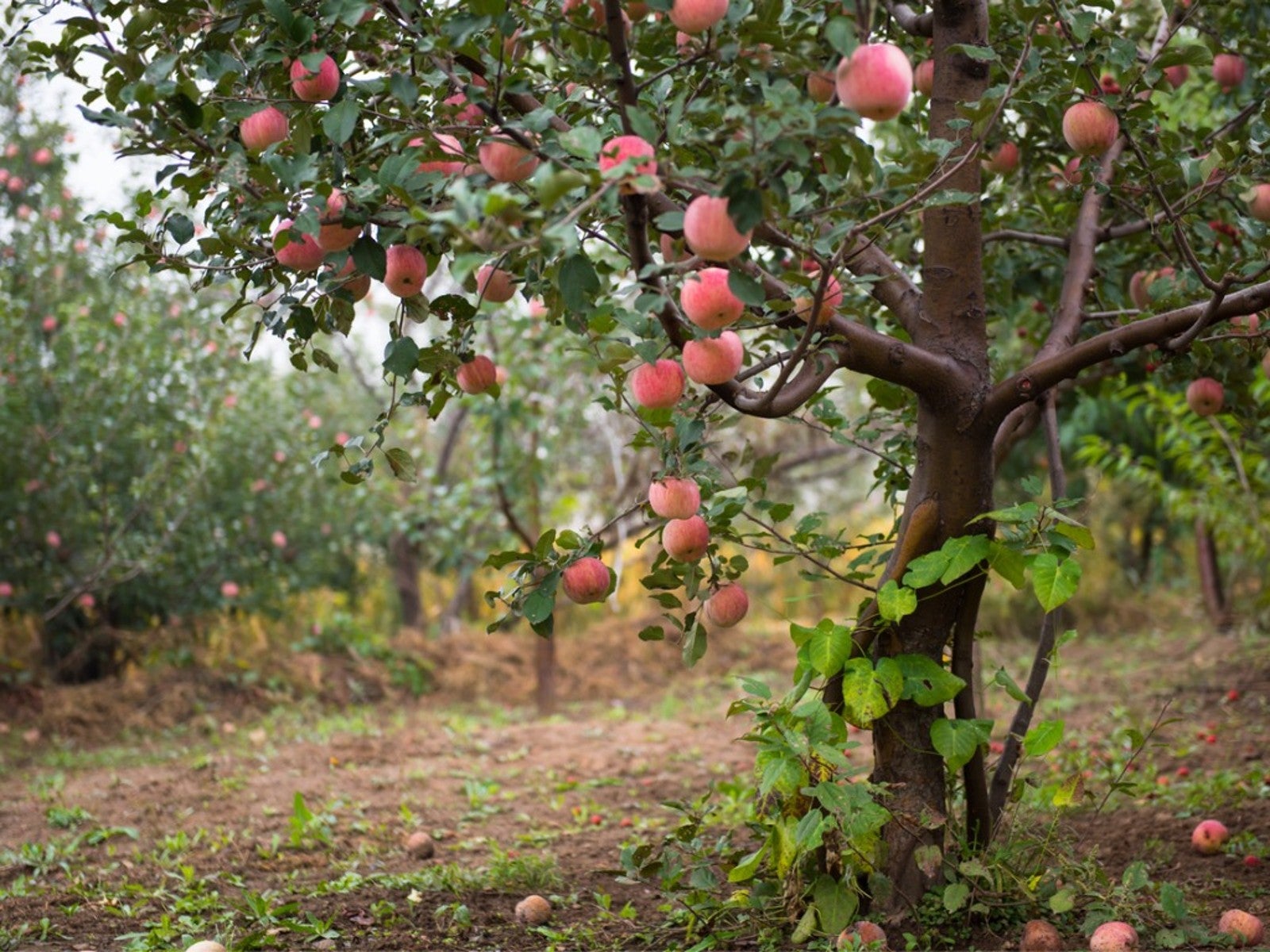Fruit Trees That Grow In Ohio Valley Gardens


What are the best fruit trees in Ohio Valley gardens? If you're thinking about adding a small orchard to the backyard, you may have visions of harvesting bushels of fruit from your trees. Before you get too caught up in the dream, realize that growing your own fruit requires a multi-year commitment with careful attention to the selection of both the type and varieties of fruit you wish to grow.
Growing Fruit Trees in Illinois Zone 5
While most of Ohio Valley states are in USDA hardiness zones 6 and 7, there are a few colder spots in this region with zone 5 climate. When selecting fruit trees, one of the first criteria to consider is winter hardiness. Apples, pears and sour cherries are hardy in zone 5 and are the most likely to produce fruit every year.
Some cultivars of apricots, sweet cherries, nectarines, and peaches are also considered hardy in zone 5. Unfortunately, issues like colder-than-normal winters and late spring frosts influence whether or not these fruit trees will survive for multiple seasons or reliably produce a crop.
It's essential to understand that USDA hardiness zones indicate the average coldest temperatures a region is likely to experience. It does not indicate whether or not fruit trees will bud or bear fruit the next spring. For this, one also has to consider chill hours.
Chill Hours for Ohio Valley Fruit Trees
Chill hours refers to the amount of time fruit trees will experience temperatures between freezing and 45 degrees F. (7.2 C.). When trees experience too few chill hours, the flower buds won't open, or they will open sporadically in the spring. Fruit trees in Kentucky and Tennessee are more likely to experience an insufficient amount of chill time than those in northern Illinois.
On the other hand, too many chill hours can cause fruit trees to break dormancy and bud too early in the season. This is especially true when a warm spell during the winter stimulates the flow of sap upward and the buds begin to swell. Late spring freezes and frosts can then damage buds, which may result in loss of the entire crop for the year.
When researching fruit trees, one is likely to discover that chill hour requirements can vary widely between cultivars. Most types of deciduous fruit trees have “low-chill” cultivars which are best suited for southern climates. When looking for types of fruit for the Ohio Valley, consider varieties with higher chill hour requirements.
Sign up for the Gardening Know How newsletter today and receive a free copy of our e-book "How to Grow Delicious Tomatoes".
Fruit Trees in USDA Hardiness Zones 6 and 7
USDA hardiness zone 6 includes southern Illinois and Michigan, and northern Missouri as well as most of Ohio and Indiana. Fruit trees, like apricots, peaches, pears, nectarines and sweet cherries, produce more reliable crops in zone 6 as compared to zone 5. Sour cherries, apples, pawpaws, pears and plums also do very well in zone 6 gardens.
Zone 7 includes southern areas of Missouri, Illinois, Indiana and Ohio as well as most of Kentucky and Tennessee. Some sour cherry varieties don't fare well in zone 7, but gardeners in this climate can add hardy pomegranates to the list of fruit trees they can grow. Other types of fruit that does well in zone 7 includes:
Selecting Fruit Trees in Missouri and the Ohio Valley
Local nurseries are often a good source for the type and varieties of fruit trees that do well in a given area. Their garden specialist can also advise orchardist about the basic growing requirements and pollination needs for the trees they select.
If you plan to order fruit trees online for the Ohio Valley, you may wish to start your search with these cultivars:
Apples
- Cortland
- Empire
- Honeycrisp
- Mcintosh
Apricots
- Goldcot
- Harglow
- Patterson
Sour Cherries
- Meteor
- Montmorency
- North Star
Sweet Cherries
- Bing
- Blackgold
- Sweetheart
Nectarines
- Hardired
- Mericrest
- Summer Beaut
Pawpaws
- Sunflower
- Wabash
Peaches
- China Pearl
- Contender
- Reliance
Pears
- Anjou
- Bosc
- Red Bartlett
Plums
- Bluebyrd
- Earliblue
- Damson
Pomegranate
- Russian 26
- Salavatski

Laura Miller has been gardening all her life. Holding a degree in Biology, Nutrition, and Agriculture, Laura's area of expertise is vegetables, herbs, and all things edible. She lives in Ohio.